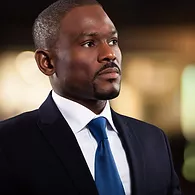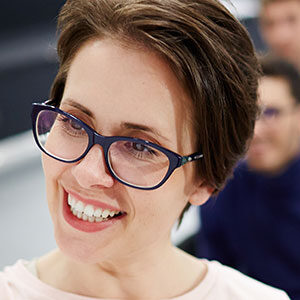How to Introduce Yourself in an Interview: 8 Easy Tips Every Job Seeker Must Know
If you are a job seeker, knowing how to introduce yourself when you go for an interview in any field has a very big significance towards your success. The thing is first impressions matter a lot, especially when it comes to job interviews. Introducing yourself confidently and effectively can set the tone for a successful interview. Knowing how to introduce yourself in an interview is a critical skill that can help you stand out from other candidates and leave a lasting impression on the interviewer. This article will explore tips and strategies to help you ace your introduction and make a great first impression in your next job interview. We will be discussing 8 easy tips every job seeker must know when going for an interview for any job.
Why is the way you introduce yourself at an interview important?
In any interview, first impressions are formed quickly after meeting someone and can set the tone for the rest of the interview. An excellent introduction can demonstrate your confidence, professionalism, and job readiness. A poorly executed introduction, on the other hand, can raise doubts in the interviewer’s mind about your suitability for the role.
Furthermore, a strong introduction can set you apart from other candidates and give you an advantage in hiring. A well-delivered introduction can help you stand out and become more memorable in the interviewer’s mind. This is especially important if numerous qualified candidates are seeking the same position.
Quick Guide on What You Must Do Before the Interview
Start by researching the company and your interviewers.
Before your interview, it is advisable to take some time to research the company. This research should include looking at its history, products, and services. Besides, finding out as much as possible about your interviewers is also recommendable.
Dress professionally for the interview.
When you go for an interview, the first thing that the interviewer will notice is your appearance. It is important to dress professionally for the interview to make a good first impression. Always choose appropriate clothing that aligns with the company’s culture, eliminate any wrinkles, avoid flashy attire, and wear closed-toe shoes that are comfortable to walk in.
By wearing clothes that make you look and feel good, you become more confident throughout the interview. For example, you could wear a tie embedded with your favorite team’s logo, injecting your personality into the interview process. However, you must prioritize the company’s workplace dress code before deciding how to dress for the interview.
Learn how to avoid distractions and keep eye contact.
You’ve researched about the company and even dressed for the day, but wait… You remember you are not good at having one-on-one conversations with strangers. So how do you go about it? If you get nervous in social situations, interviews can be especially daunting. One effortless strategy to ease your nerves (and impress your potential employer) is to make eye contact and avoid distractions.
You can do this by focusing your eyesight behind the interviewer’s head. Adopting such a technique will prevent your eyes from wandering around, which may give the interviewer the impression that you are looking directly at them. Another effective approach to eliminate distractions is by keeping your hands clasped in front of you. Such a technique can help prevent fidgeting and keep you from playing with your hair or jewelry, distracting you and the interviewer.
Learn how to put up your best smile.
Knowing that your smile can be the greatest asset is crucial as a job applicant. As a result, knowing how to put up the best smile to exude confidence is highly desirable. You want to ensure that you set up the right mood before the interview begins, and that is highly achievable through a great smile.
One effective approach to learning how to put up the best smile is practicing in front of a mirror, maintaining eye contact, and relaxing your face. With practice and patience, you will create a perfect smile to charm your interviewer.
 Become accustomed to professional body language.
Become accustomed to professional body language.
Awareness of body language is essential to make the best impression during an interview. Since body language is a key part of communication, one must be mindful of how one displays themselves in front of their interviewers.
For example, one viable trick to help you exude confidence is keeping your shoulders back, and chin raised, and chest high. Maintaining eye contact is another part of body language communication, which should be present throughout the introduction and the interview process. Doing so will show the potential employer of your engagement level, indicating your ability to communicate well with future colleagues.
Rehearse your introduction with a friend.
Before the interview day, it’s also advisable to rehearse your introduction with a friend. Having someone trusted to give you honest feedback can assist you in knowing where to improve in your communication, body, and engagement process. Besides, a rehearsal will help you remember key points and deliver them clearly and concisely. It is also an excellent opportunity to get feedback on your delivery and overall performance.
NB: CVGarage offers expert help in interview preparations for jobs in any field. Get in touch with us today to book an appointment.
How to Introduce Yourself in an Interview: 8 Easy Tips Every Job Seeker Must Know
Step-by-Step Guide on How to Introduce Yourself in An Interview
Step 1: Stand for the interviewers
Respect is the first key to the success door for any job applicant. If you are physically good, standing for the interviewer or interviewers is advisable to show respect. Besides, when seated in a waiting room and the interviewers come in, stand up immediately you see them. However, you will likely find your interviewers already seated in most interviews. In such a situation, one should remain standing until one completes the introduction phase.
If you spoke with your interviewer by phone or email before coming to the job interview, acknowledging your previous communication is a good practice. You can do this by stating, “It is nice to meet you in person.” Besides, someone within the company may guide you to the interview. Do not forget to thank them for their generosity before they leave.
Step 2: Make and maintain eye contact
Using your initial practice on eye contact, it is now time to make and maintain it with your interviewers. Make sure eye contact remains constant throughout the introduction phase. It will convey that the interviewer is your main target and has your full attention. When interviewed by a panel (more than one interviewer), making eye contact with every person on the panel is highly desirable. Always remember to shift your eye contact to someone addressing you to ensure they have your full attention.
Step 3: Smile at the interviewer
A broad smile is one effective way to light up the interview room and create a perfect tone for the interview process. The interviewer will know you are warm and happy to be considered for the position. Most importantly, smiling can also assist in minimizing your nerves, which then makes it easier for you to respond to the interview questions. Aiming to make your smile as natural and genuine as possible would be best.
Step 4: Greet the interviewer
 A physical greeting entails shaking hands, which is also the traditional way of greeting someone as a sign of respect. Step or lean towards the interviewer in an interview room, then shake their hand firmly. This will indicate how confident you are and ready for the task ahead. Besides, if you face a selection panel (more than one interviewer), you should shake each interviewer’s hand. Shaking someone’s hand will also make it easier for someone to remember you.
A physical greeting entails shaking hands, which is also the traditional way of greeting someone as a sign of respect. Step or lean towards the interviewer in an interview room, then shake their hand firmly. This will indicate how confident you are and ready for the task ahead. Besides, if you face a selection panel (more than one interviewer), you should shake each interviewer’s hand. Shaking someone’s hand will also make it easier for someone to remember you.
Alongside the first handshake, you should follow up with a simple greeting. For example, you can say, “Hi, I am honored to be here.” Always remember to speak clearly and confidently. Having such a greeting in an interview is good for establishing an excellent rapport before telling the interviewers who you are.
Step 5: Introduce yourself and thank the interviewer
The next phase of your introduction is telling the interviewer who you are. To do this, you must clearly state your name in a clear and audible voice. Although the interviewer is already aware of the position you are interviewing for, don’t just assume mentioning it to confirm your appointment. One effective strategy to achieve this introduction phase is by mentioning the role as you thank the interviewer or panel for taking their valuable time to meet with you.
For example, you can say, “Hello, I am George Wafula. Thank you for dedicating your valuable time to chat with me today regarding the vacant position in the account role.” With such a greeting, you give your interviewer the information they need for the introduction and indicate how you appreciate their valuable time. Such an introduction can also build a further positive engagement between you and the potential employer.
After your introduction, your interviewer may also introduce themselves. After finishing their introduction, thank them by stating how it is nice meeting them. If the interviewers give their full names in the introduction, a formal greeting with their title and surname is highly advisable. The ability to repeat the person’s name indicates that you are paying attention, which also helps reinforce your name in their mind.
 Step 6: Sit and always maintain open, professional body language
Step 6: Sit and always maintain open, professional body language
After the introduction phase, another key to focus on is your sitting posture on the chair provided for you. It is advisable to sit comfortably while, at the same time, maintaining an open and professional appearance. For example, the most recommended sitting position is having your legs together and your hands in your lap or beside your legs. This sitting position makes one appear approachable.
Step 7: Provide a further introduction when needed
At this stage, the interviewers are ready to begin the formal interview process by asking you specific questions. If this is the case, always let your interviewers lead the discussion as you focus on listening, understanding, and responding to questions. However, there are some circumstances when the interviewer does not begin to ask questions immediately after the introduction. Such a scenario offers you more room to introduce yourself further. When giving an additional introduction, you can briefly summarize the relevant professional experience and reaffirm why you are interested in the position you are about to interview for.
We have compiled 20 interview questions with answers you should expect in a job interview. Be sure to check them out.
Below is a general example of how you can provide a further introduction:
Example: “I am a sales professional with over eight years working in the real estate sector. Over that period, I have interacted with many clients and investors regarding property acquisition, preferences, and people’s spending patterns. This experience has equipped me with the relevant skills in consumer behavior. With this knowledge, I can implement it to help the company realize more revenue while working as a sales and marketing executive.”
Step 8: Introducing yourself after the interview
Again, it is crucial to note that the introduction process continues even after the interviewers begin asking specific questions during the interview. Rather, the introduction phase ends after the interview with a proper goodbye. You will not wake up immediately after answering the last question and leave the room without speaking.
After the interview, it is advisable always to follow your interviewer’s lead. For example, stand when they stand, shake their hands(s) again and thank them for taking their time to know you concerning the role. Always remember to smile throughout the interview process. Besides, you can rehearse phrases you can say at the end of the conversation to ensure it ends positively. Here are a few examples of relevant phrases:
Example 1: “It was a pleasure meeting you and sharing more details about my candidature. I appreciate your time today.”
Example 2: “Thank you for a great conversation. Hope you enjoy the rest of your day.”
Note: You have just finished your interview and believe you got everything right. However, the recruiter still hasn’t reached out to you. What do you do? Find more insights on how to make a follow-up from experts at cvgarage.co.ke.
 Closing Remarks
Closing Remarks
You may have met and had meaningful conversations with hundreds of people as an active job applicant. The number of people also increases as you interview for more positions. When having these conversations, always apply the same etiquette when meeting a new person. Most employers prefer hiring solid teammates. Therefore, as much as you want to become part of the team, learning to be etiquette-conscious in all conversations is the key to success. When interviewing yourself in the next interview, always plan ahead, and practice confidence, dress code, and body language. Remember to always ask meaningful questions when given an opportunity at the end of the interview. With these tips, your next job could soon come knocking!
Get our expert help
Need more help with how to introduce yourself in an interview? Our experts at Cvgarage.co.ke are here to help with your interview preparations. With our help, you magnify your chances of landing that dream job! Contact us today for inquiries or book an appointment.





 Become accustomed to professional body language.
Become accustomed to professional body language. Closing Remarks
Closing Remarks